 W
WThe Battle of Batina or Batina Operation is one of the battles of the Second World War which took place from 11 to 29 November 1944 at the Croatian village of Batina in Baranja, on the right bank of the Danube River, between the units of the Red Army and the People's Liberation Army against the Wehrmacht and their allies. According to some estimates, the Battle of Batina is the biggest battle by the number of participants, the intensity of fighting, and the strategic importance that occurred during the World War II in Yugoslavia.
 W
WThe Battle of Dražgoše was a Second World War battle between the Slovene Partisans and Nazi Germany armed forces, which took place between January 9 and January 11, 1942, in the village of Dražgoše in German-annexed Slovenia. This battle was the first direct confrontation between the two. It ended with brutal reprisals of German forces against the villagers and the destruction of the village.
 W
WThe Battle of Vukov Klanac, known in English as the Battle of Vukov Gorge, was a 7-day fight between Wehrmacht and Yugoslav Partisan forces in central Dalmatia. The battle occurred between 15 and 23 October 1944. It occurred in and around the region of Vukov Klanac as Wehrmacht forces retreated from the nearby cities of Dubrovnik and Ston. It resulted in the 369th Devil's Division losing most of its equipment and a large fraction of its manpower to Partisan forces.
 W
WBela Crkva incident was an event that took place in village Bela Crkva near Krupanj on 7 July 1941, when a group of Partisans led by Žikica Jovanović Španac killed two gendarmes, who were enforcing ban on political rallies after German occupation of Serbia. The event was latter taken as beginning of uprising in Serbia led by Communist Party of Yugoslavia against Axis occupiers and their collaborators.
 W
WThe Belgrade Offensive or the Belgrade Strategic Offensive Operation was a military operation during World War II in Yugoslavia in which Belgrade was liberated from the German Wehrmacht through the joint efforts of the Soviet Red Army, Yugoslav Partisans, and the Bulgarian Army. Soviet forces and local militias launched separate but loosely cooperative operations that undermined German control of Belgrade and ultimately forced a retreat. Martial planning was coordinated evenly among command leaders, and the operation was largely enabled through tactical cooperation between Josip Broz Tito and Joseph Stalin that began in September 1944. These martial provisions allowed Bulgarian forces to engage in operations throughout Yugoslav territory, which furthered tactical success while increasing diplomatic friction.
 W
WThe Bregalnitsa-Strumica operation was an offensive operation of Bulgarian Army during World War II. It was held by Fourth Bulgarian army from 15 October to 14 November 1944 and was aimed to secure the left flank of the First Bulgarian Army, blocking the way for retreat of the German group armies 'E' from Greece.
 W
WCase Black, also known as the Fifth Enemy Offensive in Yugoslav historiography and often identified with its final phase, the Battle of the Sutjeska was a joint attack by the Axis taking place from 15 May to 16 June 1943, which aimed to destroy the main Yugoslav Partisan force, near the Sutjeska river in south-eastern Bosnia. The failure of the offensive marked a turning point for Yugoslavia during World War II. It was also the last major German-Italian joint operation against the partisans.
 W
WCase White, also known as the Fourth Enemy Offensive was a combined Axis strategic offensive launched against the Yugoslav Partisans throughout occupied Yugoslavia during World War II. It was one of the most significant confrontations of World War II in Yugoslavia. The offensive took place in early 1943, between 20 January and mid-to-late March. The Axis operation prompted the Partisan Supreme Command to enact its plans to drive toward eastern Herzegovina, Sandžak and Montenegro. In order to do this, Tito formed the so-called Main Operational Group, which eventually succeeded in forcing its way across the Neretva in mid-March 1943, after a series of battles with various hostile formations. Other Partisan formations, the 1st Croatian and 1st Bosnian Corps, managed to evade Axis blows and, despite significant losses, reclaim most of the territory they had held before the beginning of the operation. Since its final stage took place on the Neretva River, the operation was known in Yugoslavia as the Battle of the Neretva. This stage is also known as the Battle for the Wounded.
 W
WThe Operation Draufgänger was a German Wehrmacht military operation against the Yugoslav Partisans at the Montenegrin-Serbian border area, aimed at breaking the Partisan foothold on the Lim river which was a potential penetration point into Serbia. In turn, it was a Partisan counter-operation, known as the Andrijevica Operation. The operation began on 18 July on the Čakor–Gusinje–Andrijevica–Berane line, when Kampfgruppe E burnt down at least 16 villages and killed several hundreds inhabitants. From different directions, German troops attacked villages and a part approached Andrijevica, pushed out parts of two Partisan brigades, and then took over the town on 19 July and continued attacking. The staffs of the Partisan brigades assessed the combined German forces as inadequate and self-initiatively decided to attacks, resulting in great German losses. With the possibility to surround and destroy, the II Assault Corps gave the operational command on 23 July on general attack. From different directions the German troops were surrounded in the wider region of Murino on 24 July. On 28 July the Partisan 2nd, 5th and 17th divisions were ordered to move across the Ibar, which gave the opportunity for the 14th Regiment SS to break through Čakor towards Peć, while larger part of the 21st Division SS broke and many Albanians deserted. The German troops were decisively defeated, and the Partisans moved for action in Serbia. Operation Rübezahl followed.
 W
WThe Drvar uprising was the World War II uprising of the Serb population of Bosnian Krajina. Italy supported it, both politically and in arms, in its struggle against the fascist puppet state of the Independent State of Croatia between 27 July and 26 September 1941.
 W
WThe Battle of Grčarice was a battle fought in early September 1943 between the Slovene Partisans and the Blue Guard. The battle was waged in Grčarice in German-occupied Yugoslavia, modern-day Slovenia.
 W
WKnin Operation was a major Yugoslav Partisan operation during World War II in Yugoslavia launched by the 8th Dalmatian Corps from 7 November to 9 December 1944 with the purpose of destroying German, Ustaše and Chetnik formations in North Dalmatia and the city of Knin, then part of the Independent State of Croatia. It was the final part of the 8th Corps offensive for the liberation of Dalmatia which began on 12 September 1944. The Knin operation had three phases: Initial battles on approaches to Knin from 7 November to 25 November, main battle and liberation of Knin from 26 November to 4 December, and final battles and pursuit of retreating Axis forces to Otrić in Lika from 5 December to 9 December.
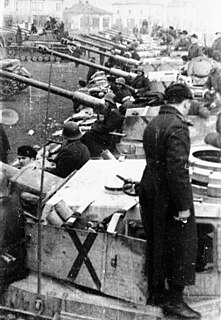 W
WThe Kosovo Operation was a series of military operations leading up to one final push during World War II, launched by the Bulgarian army with the assistance of Yugoslav and Albanian Partisans to expel German forces from Kosovo and prevent the retreat of German forces from Greece. German Army Group E was withdrawing through it from Greece towards Bosnia, since the escape route through Niš and Belgrade had been closed by the Yugoslav Partisan, Bulgarian and Soviet forces.
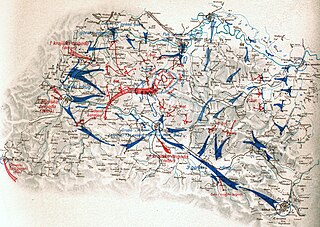 W
WThe Kozara Offensive, also known as Operation West-Bosnien by the Axis, was fought in 1942 on and around the mountain of Kozara in northwestern Bosnia. It was an important battle of the Yugoslav Partisan resistance movement in World War II. It later became an integral part of Yugoslav post-war mythology, which celebrated the courage and martyrdom of outnumbered and outgunned Partisans and civilians. Certain sources mistakenly identify the Kozara Offensive as part of Operation Trio.
 W
WOperation Kugelblitz was a major anti-Partisan offensive orchestrated by German forces in December 1943 during World War II in Yugoslavia. The Germans attacked Josip Broz Tito's Partisan forces in the eastern parts of the Independent State of Croatia in an attempt to encircle and destroy them, thereby preventing the Partisans from entering the Territory of the Military Commander in Serbia. Operation Kugelblitz was followed up immediately by Operation Schneesturm (Blizzard) which sought to capitalise on the initial success of Operation Kugelblitz. Both operations are associated with the Sixth Enemy Offensive in Yugoslav historiography.
 W
WThe Battle of Kupres was a battle fought in 1942 during World War 2 in Independent State of Croatia between the forces of the Independent State of Croatia and the Yugoslav Partisans, in and around the town of Kupres in western Bosnia. The Partisans launched three concentrated attacks against the garrison of 1,500 men during the nights of 11/12 August, 14 August and 19 August. Although outnumbered, the Black Legion, Croatian Home Guard and local militia units successfully defended the town against several Partisan brigades.
 W
WThe Mostar Operation was a series of Yugoslav Partisan military operations in Herzegovina from February 6–15, 1945.
 W
WNiš operation was an offensive operation of the Bulgarian army, supported by Yugoslav Partisans against German Army Group E in order to secure the left flank of the Third Ukrainian Front of the Red Army.
 W
WThe Battle of Odžak was the last battle of World War II in Europe. The battle began on 19 April 1945 and lasted until 25 May 1945, 17 days after the end of the war in Europe. The combatants were Ustashe commanded by Petar Rajkovačić and the Yugoslav partisans commanded by Miloš Zekić. The battle took place in the Bosnian town of Odžak. The battle was a victory for the partisans.
 W
WThe Capture of Olovo was a battle fought between allied forces of Chetnik Detachments of the Yugoslav Army (Chetniks) and Yugoslav Partisans against the Axis forces of Independent State of Croatia garrisoned in Olovo in the first year of the World War II in Yugoslavia.
 W
WOperation Alfa was an offensive carried out in early October 1942 by Italian, Croatian and Chetnik forces against the communist-led Partisans in the Prozor region, then a part of the Croatian puppet state, the Independent State of Croatia (NDH). The operation was militarily inconclusive, and in the aftermath, Chetnik forces conducted mass killings of civilians in the area.
 W
WOperation Southeast Croatia was a large-scale German-led counter-insurgency operation conducted in the southeastern parts of the Independent State of Croatia, during World War II. It was the first of two German-led operations targeting mainly Yugoslav Partisans in eastern Bosnia between 15 January and 4 February 1942. Several days after the conclusion of Operation Southeast Croatia, a follow-up operation known as Operation Ozren was carried out between the Bosna and Spreča rivers. Both operations also involved Croatian Home Guard and Italian troops and are associated with what is known as the Second Enemy Offensive in post-war Yugoslav historiography. The Second Enemy Offensive forms part of the Seven Enemy Offensives framework in Yugoslav historiography.
 W
WOperation Trio was the first large-scale joint German-Italian counter-insurgency operation of World War II conducted in the Independent State of Croatia (NDH), which included modern-day Bosnia and Herzegovina. It was carried out in two phases within eastern Bosnia from 20 April to 13 May 1942, with Ustaše militia and Croatian Home Guard forces taking part on the Axis side. The aim of the operation was to target all insurgents between Sarajevo and the Drina river in eastern Bosnia. These included the communist-led Yugoslav Partisans and Serb nationalist Chetniks. Differentiating between the rank and file of the two insurgent factions was difficult, as even the communist-led insurgent groups consisted mainly of Serb peasants who had little understanding of the political aims of their leaders.
 W
WThe Raid at Ožbalt was an operation on 31 August 1944 in which 105 Allied prisoners of war (POWs) were rescued by Slovene Partisans. The majority were liberated from a work site at the village of Ožbalt about 25 kilometres (16 mi) west of Maribor on the railway line to Dravograd in the German Reichsgau Steiermark (Styria), now part of modern-day northern Slovenia. Six of the liberated POWs were separated from the group during an engagement with the Germans a few days after their liberation, but following a 14-day trek across 250 kilometres (160 mi) they were flown out of a Partisan airfield at Semič to Bari, Italy. The successful escapees consisted of eight Frenchmen, nine New Zealanders, 12 Australians, and 70 British POWs.
 W
WThe Siege of Rogatica was a joint attack of Partisan and Chetnik rebel forces on Rogatica, then held by the Independent State of Croatia. The siege continued between 13 and 24 October 1941.
 W
WOperation Rösselsprung was a combined airborne and ground assault by the German XV Mountain Corps and collaborationist forces on the Supreme Headquarters of the Yugoslav Partisans located in the Bosnian town of Drvar in the Independent State of Croatia during World War II. The operation was launched on 25 May 1944, and was aimed at capturing or killing the Partisan leader Marshal Josip Broz Tito and destroying the headquarters, support facilities and co-located Allied military missions. It is associated with the Seventh Enemy Offensive in Yugoslav history, forming part of the Seven Enemy Offensives historiographical framework. The airborne assault itself is also known as the Raid on Drvar.
 W
WThe Sarajevo Operation was an operation by the Yugoslav Partisan Army which led to the liberation of Sarajevo and Central Bosnia in March-April 1945.
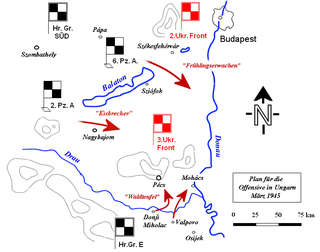 W
WOperation Spring Awakening was the last major German offensive of World War II. The operation was referred to in Germany as the Plattensee Offensive and in the Soviet Union as the Balaton Defensive Operation. It took place in Western Hungary on the Eastern Front and lasted from March 6th until March 15, 1945. It was a failure for Nazi Germany.
 W
WSrb uprising was a rebellion against the Independent State of Croatia that began on 27 July 1941 in Srb, a village in the region of Lika. The uprising was started by the local population as a response to persecutions of Serbs by the Ustaše and was led by Chetniks and Yugoslav Partisans. It soon spread across Lika and Bosanska Krajina. During the uprising numerous war crimes were committed against local Croat and Muslim population, especially in the area of Kulen Vakuf. As NDH forces lacked the strength to suppress the uprising, the Italian Army, which was not a target of the rebels, expanded its zone of influence to Lika and parts of Bosanska Krajina.
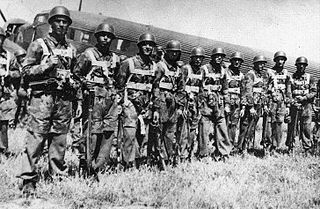 W
WThe Stratsin-Kumanovo operation was an offensive operation of the Bulgarian Army in occupied Yugoslavia during the participation of Bulgaria in World War II against the Third Reich.
 W
WThe Syrmian Front was an Axis line of defense during World War II. It was established as part of the Eastern Front in late October 1944 in Syrmia and east Slavonia, northwest of Belgrade.
 W
WThe Siege of Turjak or Battle of Turjak was fought on 19 September 1943 at the Turjak Castle between the Slovene Partisans on one side and the Slovene former units of the Anti-Communist Volunteer Militia (MVAC) and Slovene Chetniks on the other. The MVAC became defunct with the end of Italian rule. The battle followed the Partisan victory at Battle of Grčarice. Partisans encircled Turjak on 14 September, and laid siege to the castle as the defenders refused to surrender. The siege ended on 19 September with a Partisan victory, much thanks to heavy weapons that they had acquired from Italian forces.
 W
WThe Uprising in Montenegro (Montenegrin: Ustanak u Crnoj Gori), commonly known as the 13 July Uprising (Montenegrin: Trinaestojulski ustanak) was an uprising against Italian occupation forces in Montenegro. Initiated by the Communist Party of Yugoslavia on 13 July 1941, it was suppressed within six weeks, but continued at a much lower intensity until December 1941. The insurgents were led by a combination of communists and former Royal Yugoslav Army officers from Montenegro. Some of the officers had recently been released from prisoner-of-war camps following their capture during the invasion of Yugoslavia. The communists managed the organisation and provided political commissars, while the insurgent military forces were led by former officers. The entire nation rejected the privileged position offered by its occupiers, rejected the capitulation in order to fight for Yugoslavia, together with "Russia".
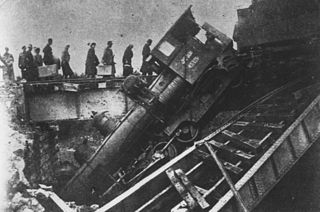 W
WThe Uprising in Serbia was initiated in July 1941 by the Communist Party of Yugoslavia against the German occupation forces and their Serbian auxiliaries in the Territory of the Military Commander in Serbia. At first the Yugoslav Partisans had mounted diversions and conducted sabotage and had attacked representatives of Aćimović's collaborationist administration. In late August some Chetniks joined the uprising and liberated Loznica. The uprising soon reached mass proportions. Partisans and Chetniks captured towns that weak German garrisons had abandoned. The armed uprising soon engulfed great parts of the occupied territory. The largest liberated territory in occupied Europe was created by the Partisans in western Serbia, and was known as the Republic of Užice. Rebels shared power on the liberated territory; the center of the Partisan liberated territory was in Užice, and Chetniks had their headquarters on Ravna Gora.
 W
WOperation Uzice was the first major counter-insurgency operation by the German Wehrmacht on the occupied territory of the Kingdom of Yugoslavia during World War II. The operation was directed against the Užice Republic, the first of several "free territories" liberated by the Yugoslav Partisans. It was named after the town of Užice, and is associated with the First Enemy Offensive in Yugoslavian historiography. The security forces of the German-installed puppet regime of Milan Nedić also participated in the offensive.